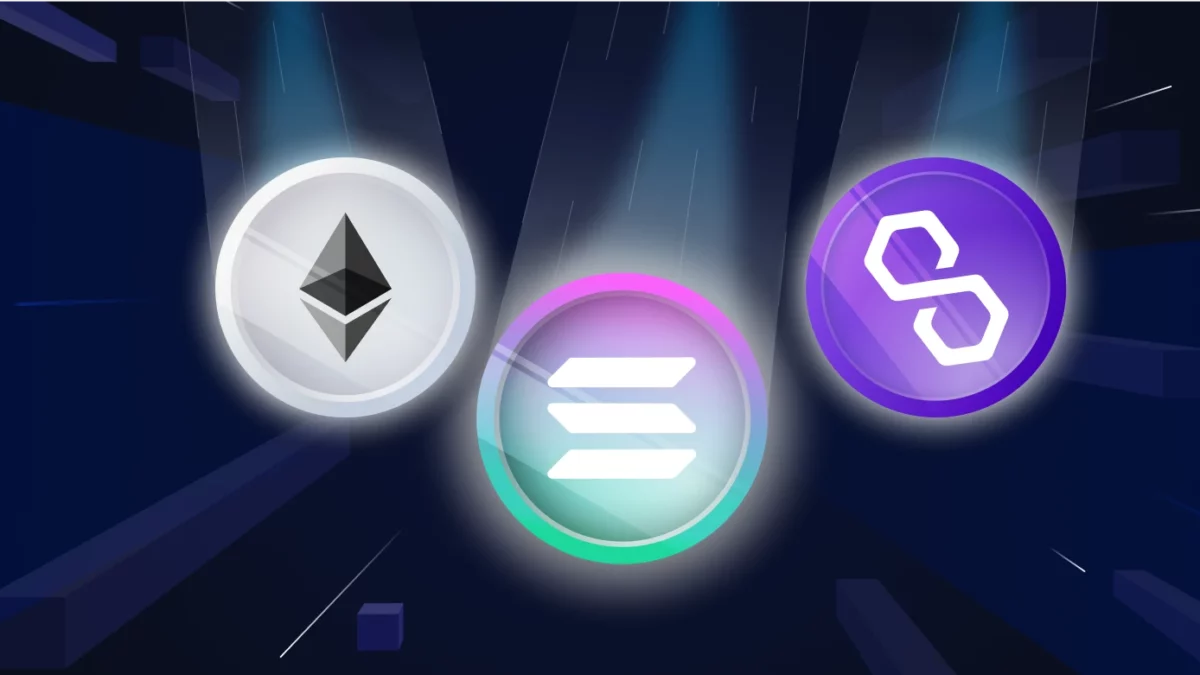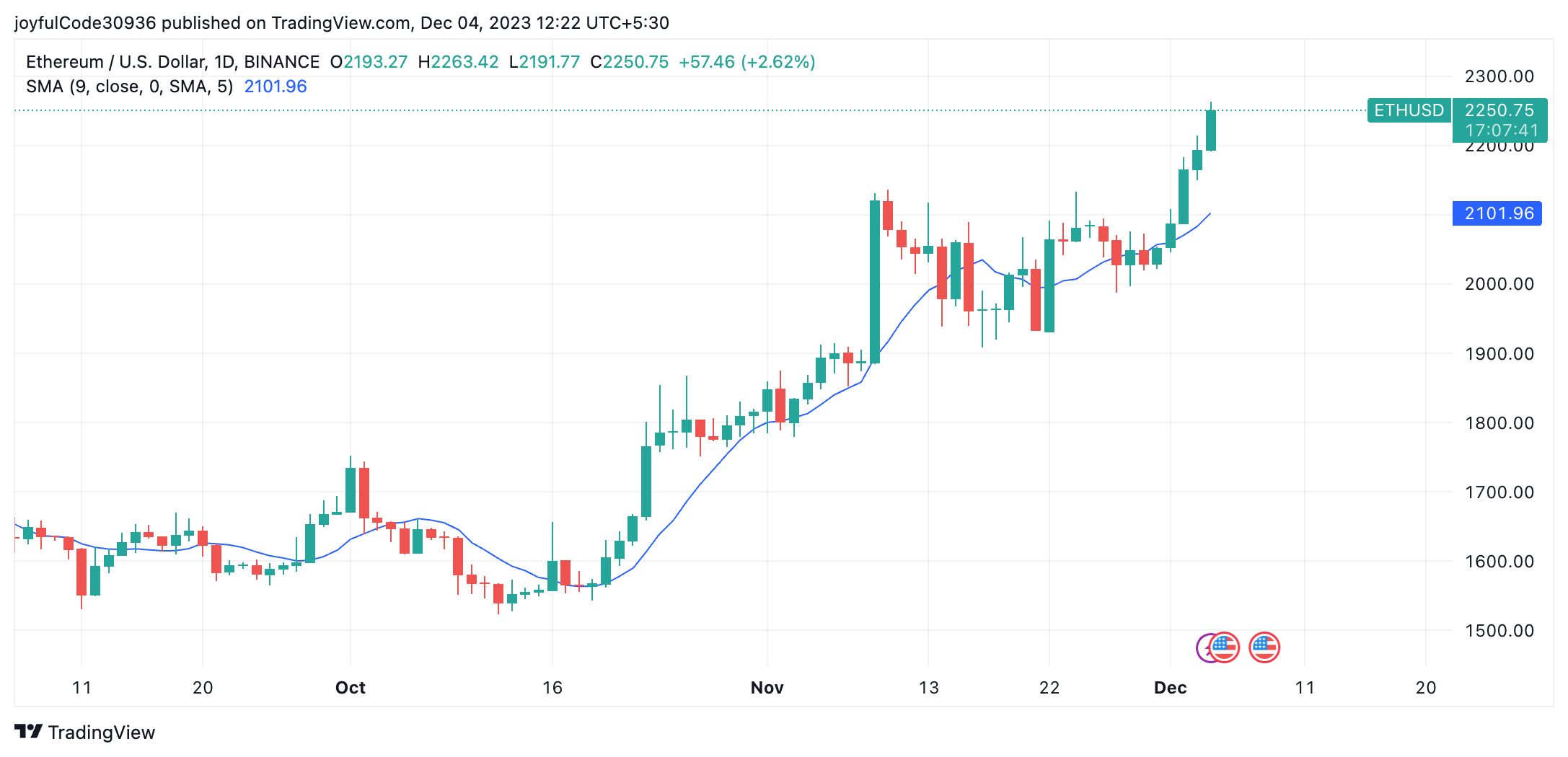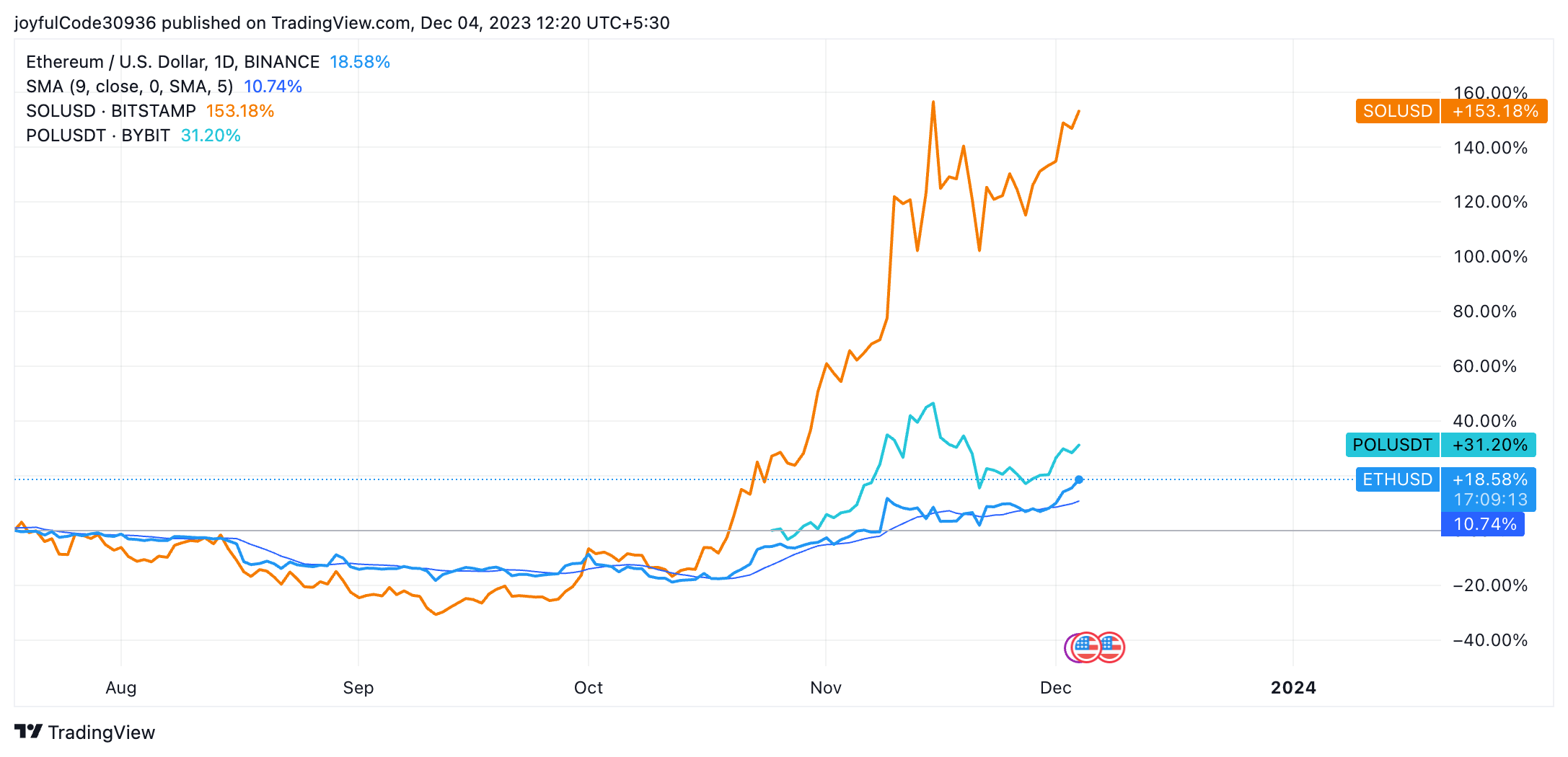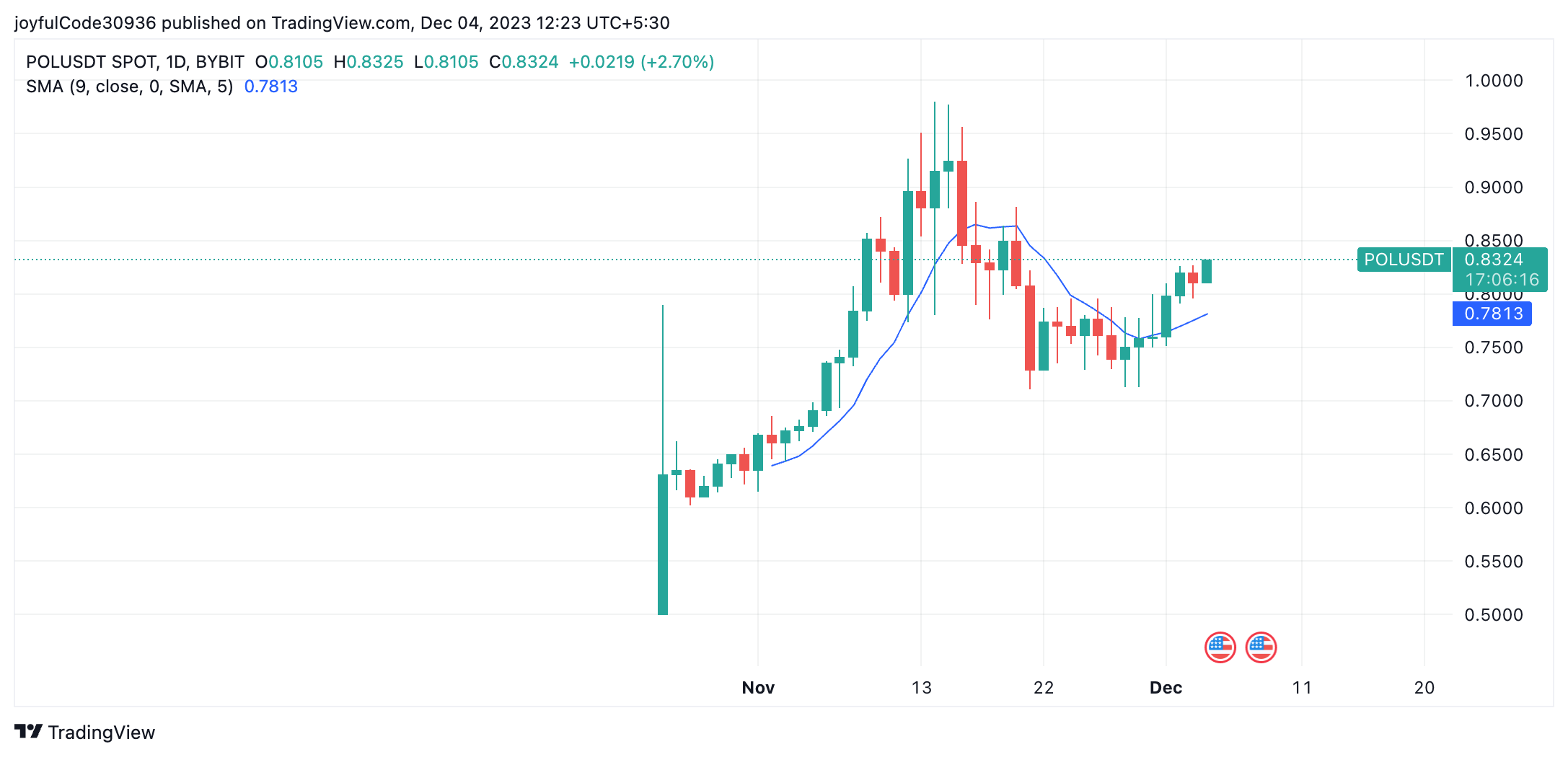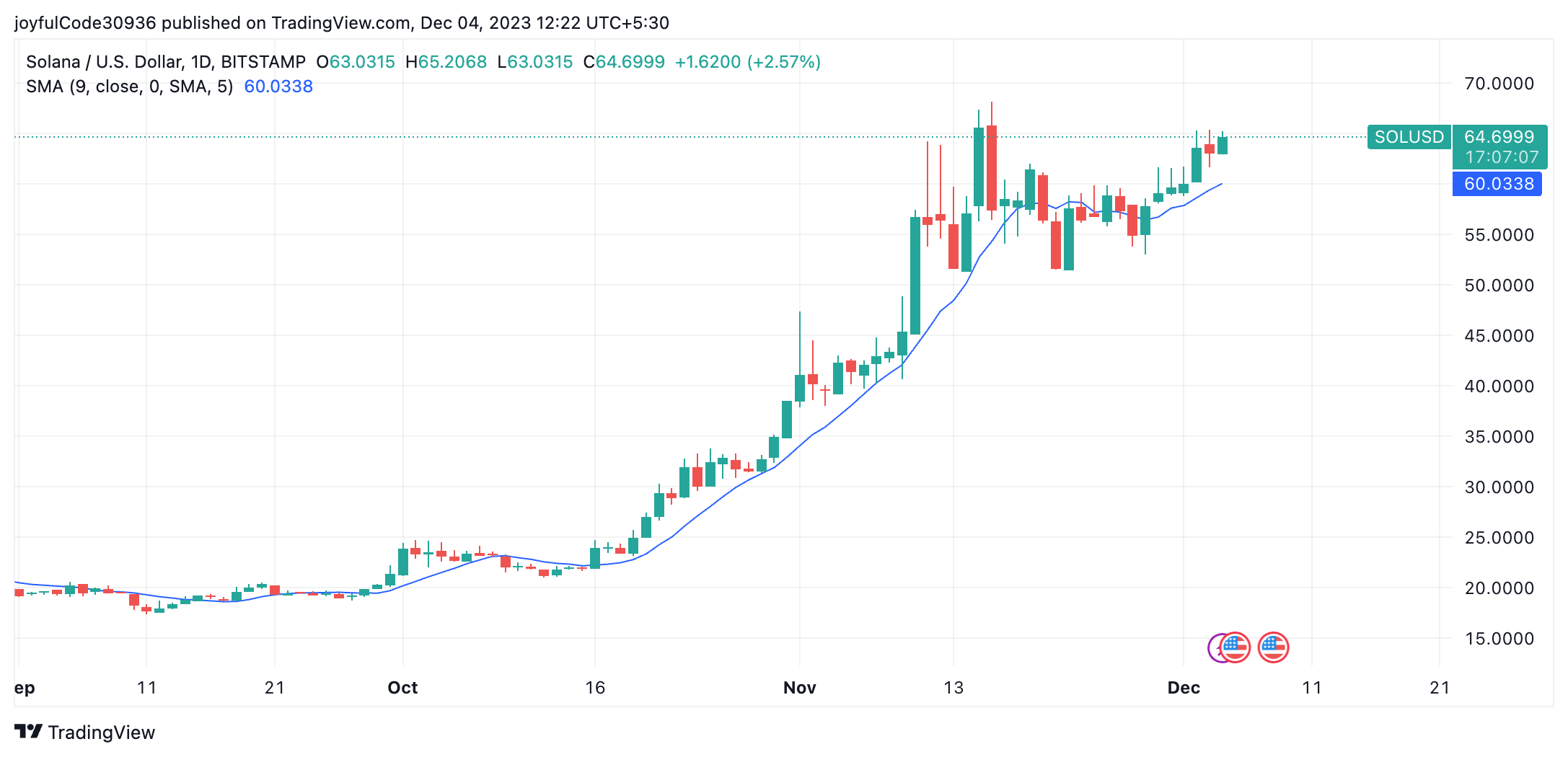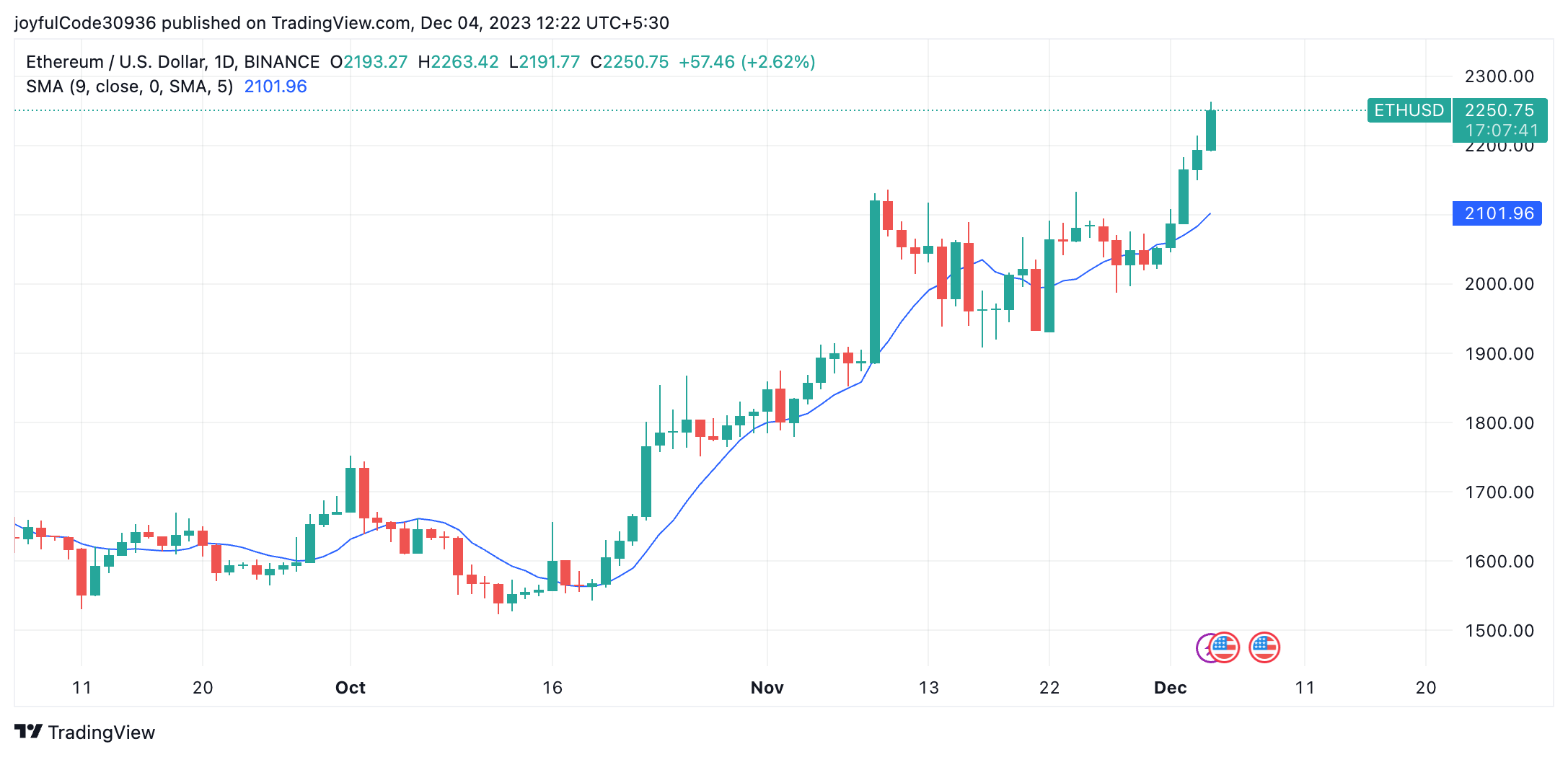Table of Contents
ToggleKey Takeaways:
- Blockchain Overview: ETH pioneers smart contracts; shifting to PoS with Ethereum 2.0. SOL uses “Proof of History,” achieving exceptional transaction speeds. POL addresses ETH’s scalability, evolving into Polygon 2.0 with zero-knowledge integration and POL token upgrades.
- Features and Developments: ETH’s key features: smart contracts, DApps; recent surge past $2000, ETF anticipation. SOL’s unique features, Tower BFT, Gulfstream, Sealevel, and Turbine; recent v1.14 upgrade. POL’s evolution to Polygon 2.0, zero-knowledge integration, POL token restaking.
- Technical Analysis and Predictions: Bullish trends for ETH ($2300-$2400), SOL ($70-$75), POL ($0.95-$1.01) as crypto markets target yearly highs.
ETH vs SOL vs POL: An Overview
Looking back at 2009, when the idea of Bitcoin was first presented to the world, the advancement that the blockchain and the crypto space had would have been beyond anyone’s imagination. From crypto assets to NFTs to DeFi applications, blockchain is helping the world shape the new future. On the cusp of innovation lies the second largest blockchain network, as per the market cap; Ethereum.
With an increasing demand for blockchain technology, newer applications are being rolled out faster. Catering to the shortcomings of the Ethereum network, two other crypto projects rose to fame, often being referred to as the ‘Ethereum Killer’; Polygon and Solana.
Now that the crypto analysts are hinting at a possible bull run as BTC breach the $40,000 level and Ethereum price move beyond $2000 level, at the time of writing this article, let us take a quick look at how the ultimate blockchain of Smart Contracts is developing itself along with the smaller blockchain networks that are tackling ETH issues and aim to make the blockchain work faster.
What is Ethereum?
Ethereum, boasting a market cap exceeding $271 billion, stands out as one of the most diverse blockchain protocols. Launched in 2013 by Vitalik Buterin, Ethereum introduced its native crypto, Ether (ETH), and gained renown for its smart contract capabilities, fostering the creation of Web3 applications, crypto, DeFi projects, and more. The Ethereum blockchain went live on July 30, 2015, following a successful public crowd sale in 2014.
Over the years, continuous efforts by the community and developers have enhanced the network’s robustness and scalability. Notably, Ethereum underwent various upgrades, including the recent Ethereum Shanghai Capella Upgrade on April 12, 2023, marking a transition from the Proof of Work to the Proof of Stake consensus mechanism after the London Hard Fork and the Ethereum Merge upgrade.
Key Features of Ethereum
- Smart Contracts: Ethereum enables the creation and execution of contracts that are self-executing with the terms of the agreement directly written into code, referred to as a smart contract.
- Decentralized Applications (DApps): Developers can build decentralized applications on the Ethereum platform, providing various use cases from finance to gaming.
- Turing-Complete: Ethereum is considered Turing-complete, allowing for complex and flexible programming logic within its smart contracts and providing a wide range of functionalities.
- Upgradeability: Ethereum has undergone upgrades to improve scalability and address other concerns. The transition from Proof of Work (PoW) to Proof of Stake (PoS) with Ethereum 2.0 is a notable ongoing development.
Additional Read: Ethereum vs Tron
Latest Ethereum News:
- As we near the end of 2023, Ethereum price is experiencing a surge in its value, as it breaks though the long-awaited $2000 mark, with bulls pushing the ETH price to reach beyond the resistance level of $2300.
- With the year that saw multiple revisions and propositions for ETFs, the ETH ETF has successfully taken a few steps with Fidelity trying to get their ETF proposition approved.
Has been long known that Fidelity entered the spot ETF race but this filing *essentially* starts the ~240+ day clock for their spot #Ethereum ETF. Just another step in the process. Will have definitive deadline dates in the coming weeks https://t.co/0C6NKcxNNz pic.twitter.com/gdW9ZQDgs9
— James Seyffart (@JSeyff) November 30, 2023
What is Solana?
Solana stands as a blockchain platform emphasizing scalability and speed. Much like Ethereum, it empowers developers to create robust decentralized applications and smart contracts. However, it goes further to ensure that the blockchain remains fast and cost-effective for all users. The unique “Proof of History” consensus mechanism is at the core of this innovation.
The significance of Solana’s Proof of History cannot be overstated in making blockchains more accessible. In contrast to more traditional systems such as Bitcoin and Ethereum, it enables the platform to process transactions thousands of times faster.
SOL, Solana’s native token, plays a pivotal role in the ecosystem. It executes smart contracts, facilitates transactions, and contributes to network security. Consequently, SOL provides essential support for the entire Solana ecosystem. The Solana protocol is designed in such a way that it enables the creation of a decentralized app, also known as DApp, via deploying smart contracts onto its blockchain. Solana aims to improve scalability by presenting a proof-of-history (PoH) consensus combined with the blockchain’s underlying proof-of-stake (PoS) consensus.
Key Features of Solana
- Proof of History: Solana introduces “Proof of History” (PoH), allowing new blocks without mutual agreement, enhancing transaction speed, and maintaining an efficient blockchain network.
- Tower Byzantine Fault Tolerance (BFT) Algorithm: BFT acts as a safety shield in Solana, ensuring continuous node operation despite multiple failures, contributing to the robustness of the Solana ecosystem.
- Gulfstream: Solana’s Gulfstream system eliminates the concept of a “memepool,” where unprocessed transactions wait.
- Sealevel: Solana’s “Sealevel” technology enables the simultaneous execution of multiple smart contracts, saving time and enhancing cost efficiency.
- Turbine: Solana optimizes transaction speed by dividing blockchain nodes into smaller packets. This process allows quick validation of smaller information packets, addressing bandwidth-related issues in the Solana ecosystem.
Latest Solana News:
- Solana launched its v1.14 upgrade in May this year. This upgrade improves Solana’s overall network experience- making it even more efficient for the creation of dApps.
Has been long known that Fidelity entered the spot ETF race but this filing *essentially* starts the ~240+ day clock for their spot #Ethereum ETF. Just another step in the process. Will have definitive deadline dates in the coming weeks https://t.co/0C6NKcxNNz pic.twitter.com/gdW9ZQDgs9
— James Seyffart (@JSeyff) November 30, 2023
- Known for being the Ethereum killer, legendary crypto on-chain analyst Raoul Pal, chose to comment on the combat between Ethereum and Solana on pure fundamentals, as it is considered a rare move.
Once you play around in the $SOL ecosystem, it feels super fast, slick, inviting and easy for the user.
The best comparison is SOL is Apple and ETH is Android.
Both win. Huge.
— Raoul Pal (@RaoulGMI) November 29, 2023
Read On: Aptos vs Solana
What is Polygon (POL)?
The Polygon Network, previously known as the ‘Internet of Blockchain,’ has expanded into 15 different crypto. It was first introduced back in 2017 when it operated under the name MATIC. Founded in October of that year by three individuals—Jaynti Kanani, Sandeep Nailwal, and Anurag Arjun—the Polygon network emerged in response to concerns about Ethereum’s limited scalability, with a goal to address these issues and broaden Ethereum’s possibilities.
Earlier this year, the Polygon ecosystem announced a significant shift through the introduction of POL. The POL token (Polygon Ecosystem Token) is designed for a gradual four-year transition, replacing the existing POLtoken and playing a crucial role in Polygon 2.0.
In this evolution, Polygon transforms into a Polygon zkEVM validium, featuring a network of interoperable blockchains tailored for specific applications. POL brings forth enhanced utility, including restaking, allowing validators to secure additional chains within the Polygon supernet by restaking their POL tokens, thereby earning additional rewards.
Key Features of Polygon Ecosystem Token (POL)
- Integration of Zero-Knowledge Technology: Polygon is aligning with Polygon 2.0 specifications, undergoing a product transformation to integrate zero-knowledge technology. This evolution positions Polygon as a comprehensive scaling solution for the Ethereum blockchain.
- Reconfiguration of Proof-of-Stake Chain: The transformation involves reconfiguring the Polygon Proof-of-Stake (PoS) chain, adapting it into a ZK validium Layer 2 network specifically designed for the Ethereum blockchain.
- Supernet Architecture Construction: A supernet architecture is under construction to support a hub of ZK Layer 2 networks. These networks will operate cohesively within an ecosystem featuring an efficient interoperability design.
- Upgrade of the POL Token: As part of the upgrade, the POL token is set to transition into the new POL token. The upgraded POL token will provide significantly enhanced utility, reflecting the expanded ecosystem, and will introduce new features such as restaking.
Read More: Polygon vs Arbitrum vs Optimism
Latest Polygon (POL) News:
- Unlocking the future, POL is set to become a next-generation token that can power a vast ecosystem of ZK-based L2 chains.
The POL token upgrade is now live on Ethereum mainnet.
Polygon 2.0, released this summer, is a roadmap for scaling Ethereum to build the Value Layer of the Internet. POL unlocks that future.
POL is a next-generation token that can power a vast ecosystem of ZK-based L2 chains.… pic.twitter.com/gmrsu0ZqLz
— Polygon (Labs) (@0xPolygonLabs) October 25, 2023
- Polygon cofounder, Sandeep Nailwal is bullish on his venture for the applications of the ZKs.
zee kay
is the only way— Sandeep Nailwal | sandeep. polygon 💜 (@sandeepnailwal) November 22, 2023
Ethereum vs Polygon vs Solana Comparative Analysis
| Ethereum | Solana | Polygon | |
| Launch Date | 2013 | 2017 | 2017 |
| Founder | Vitalik Buterin and Gavin Wood | Anatoly Yakovenko and Greg Fitzgerald | Jaynti Kanani, Sandeep Nailwal, and Anurag Arjun |
| Blockchain Protocol | Ethereum Blockchain | Solana Protocol | Ethereum Blockchain (ERC20 token) |
| Native Token | ETH | SOL | POL |
| Token Type | Native | Altcoin | ERC-20 |
| Market Cap | $269,895,623,752 | $27,226,151,104 | $55,665,787 |
| Circulating Supply | 120,233,028 ETH | 424,332,637 SOL | 67,293,315 POL |
| Max Supply | NA | NA | NA |
| Consensus Method | Proof-of-stake (PoS) | Proof of History (PoH) | Plasma Framework + Proof-of-stake (PoS) |
Ethereum vs Solana vs Polygon: Technical Analysis
As we enter the last month of 2023, the crypto space is entering a bullish sentiment as the crypto tokens are achieving greater hights and giving a sense of a possibility to antenna few yearly highs. With the new developments in the ETH blockchain, the second biggest crypto asset has breached its $2000 mark, first time since 2022, while POL price has seen some surge after its announcement of the Polygon ecosystem token. Beyond that, SOL price has also seen a surge in its value since ‘Uptober’.
As seen in the chart above, all three tokens have pulled in the communities attention and is currently aiming to reach their goals for the yearly highs. With the Bitcoin halving event set to take place by Q2 of 2024, and POL token to replace all of MATIC while the other upgrades lined up take place one after the other, ETH, SOL and POL price are expected to surge beyond their yearly rise in percentage.
Learn Moro: Bitcoin vs Solana
Polygon Price Prediction
The end of the year typically draws significant market volatility. This is usually fueled by the optimism of the investors for a positive upturn. There is anticipation that major tokens might initiate a substantial upswing, potentially pushing the POL beyond $1 by the end of the year.
Nonetheless, the POL price have experienced a modest pullback, a little after the surge it experienced after announcing the upgrade of the POL token. With the current pattern, POL token is expected to have a possibility of settling the year-end trade within the range of $0.95 to $1.01.
Additional Read: Polygon Price Prediction
Solana Price Prediction
Source: TradingView
Solana price has seen a significant upswing since October 2023 and is anticipated to maintain the upswing with certain dips in its value throughout December 2023. During the lst weeks of the month, crypto experts are expecting that the volatility of SOL may surge, accompanied by a notable increase in buying volume.
This surge may facilitate a price surge beyond the current levels, potentially exceeding its aim to breach $70. However, in the final moments, a minor pullback in price may occur, leading to the possibility of the year-end trade concluding within the range of $70 to $75.
Read On: Solana Price Prediction
Ethereum Price Prediction
While writing the article, ETH price is trading slightly above $2200, and is attempting to cross its highest point since April 2023, indicating a sustained recovery after nearly seven months of unremarkable price movements. This resurgence suggests the possibility of an extended bullish trend in the short term.
With the anticipation of the Bitcoin halving event pushing the BTC price to hights, the ETH price is also experiencing a surge in its value and is expected to breach the $2300 level if it breaks out of its current resistance level. Anticipation is building with the hope that ETH price may find its current support level at $1700 and reach the year end within the range of $2300 to $2400.
Know More: Ethereum Price Prediction 2025
Should you Invest in Ethereum & Solana & Polygon?
While we dived into the basics of the three protocols, it is evident that the use cases that ETH, SOL and POL are bringing in are being received well by the crypto community. To understand them a little better, we are going to take a look at the tokens from three perspectives.
Distinguishing Blockchain Protocols: Consensus Mechanism
In the deep dive of Ethereum, Polygon, and Solana, the overall sentiment may seem alike, but key differences set these blockchain protocols apart. A pivotal aspect is the consensus mechanism, crucial for decentralized networks. Ethereum and Polygon utilize a Proof of Stake (PoS) consensus, enabling users to earn native tokens through staking for network security. Polygon achieves quicker consensus due to its combination of technologies.
In contrast, Solana employs a Hybrid consensus, merging features from Proof of Work (PoW), Proof of Stake (PoS), and its distinctive Proof of History (PoH). This blend allows Solana to flexibly handle transactions, achieving an impressive 65,000 transactions per second.
Transaction Speed Disparities
A major distinction lies in the transaction speed among Ethereum (ETH), Solana (SOL), and Polygon (POL). Ethereum lags behind with a capacity of 13-15 transactions per second (TPS). In contrast, Solana and Polygon outpace Ethereum significantly, offering speeds of up to 65,000 and 72,000 TPS, respectively. This discrepancy in transaction speed not only defines the blockchains but also guides developers in selecting the most suitable protocol for their specific applications.
Scalability Factors
Scalability, a critical consideration for blockchain developers, highlights another key difference. Ethereum’s transaction speed is limited to 15 TPS, presenting scalability challenges. Polygon addresses this with layer 2 scaling and multichain network support, mitigating scalability issues. Solana, boasting a remarkable capacity of 65,000 TPS, virtually eliminates scalability concerns. Both SOL and POL offer users faster transaction speeds, an advanced consensus model, and an efficient architecture, positioning them as scalable choices in the blockchain landscape.
How to Invest in Solana, Ethereum, & Polygon
Investing in crypto is super simple, safe, and secured with the CoinDCX app. It doesn’t matter whether you want to invest in Polygon, Ethereum or Solana coin, we have got you covered. CoinDCX is India’s safest and simplest crypto investment app for your one-stop purchase of any crypto asset.
Here are the 4 simple steps to buy your first token with CoinDCX.
- Sign up on CoinDCX
- Complete your KYC
- Link your bank details
- Buy (POL) or Solana (SOL) or Ethereum (ETH)
FAQs
The main difference between Ethereum, Polygon, and Solana is the scalability of the blockchains and the transaction speed of each one. SOL is the fastest among the three blockchains. Solana is often termed as the Ethereum Killer because of the better functionalities of the blockchain. There is no yes or no answer to this question. Many crypto enthusiasts are of the opinion that Polygon might be better than Ethereum due to the fact that it can offer more transactions per second and has a better scalability. What is the difference between Ethereum, Polygon, and Solana?
Which one is faster: SOL, MATIC or ETH?
Is Solana an Ethereum Killer?
Is Polygon better than Ethereum?
Related posts
Understanding the Different Types of Cryptos: Coins, Tokens, Altcoins & More Explained
Explore the major types of crypto assets and their unique roles.
Read more
PAWS Telegram Game: The New Tap to Earn Game That Is Beating Hamster Kombat
Discover how to play and earn with PAWS Telegram game.
Read more
